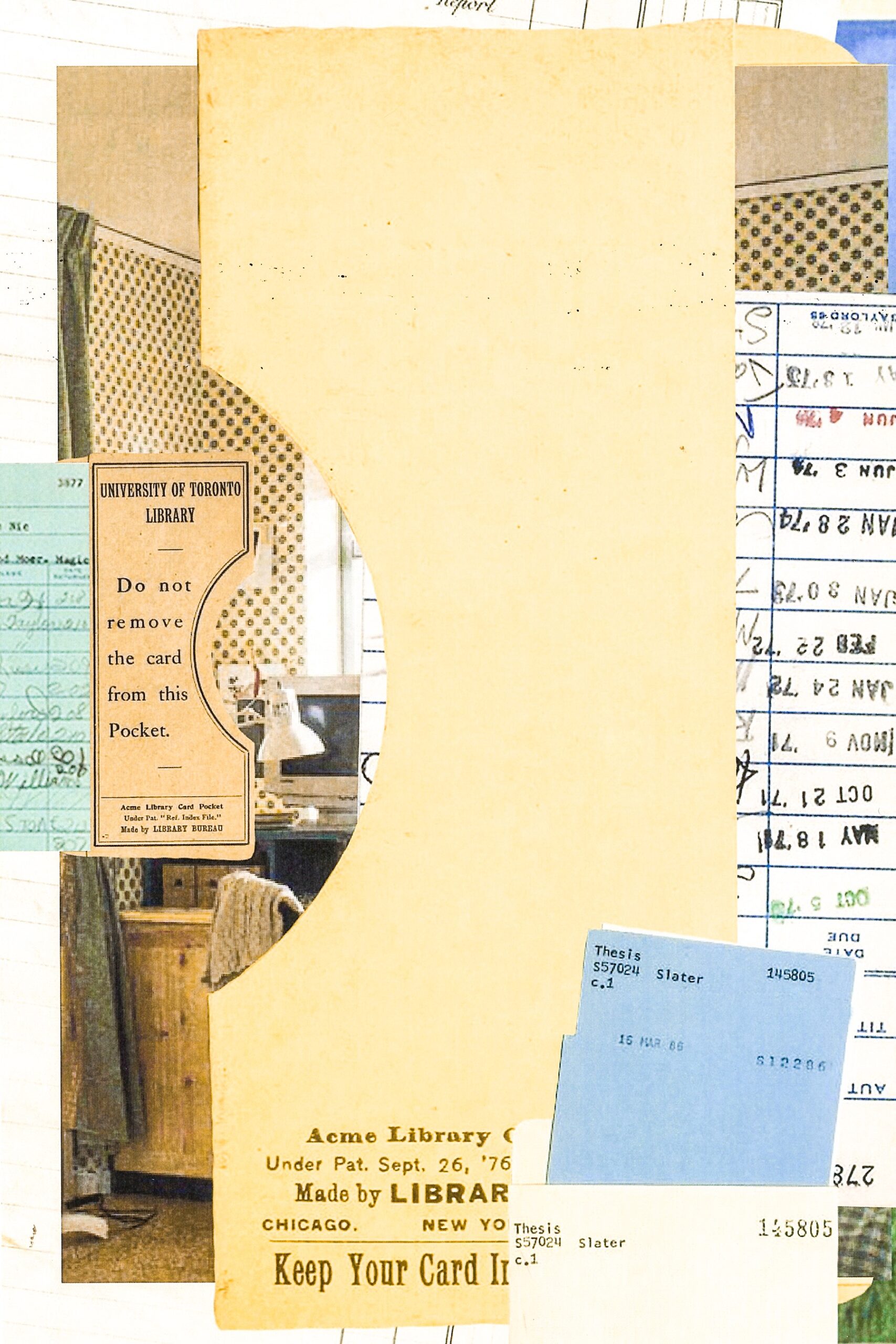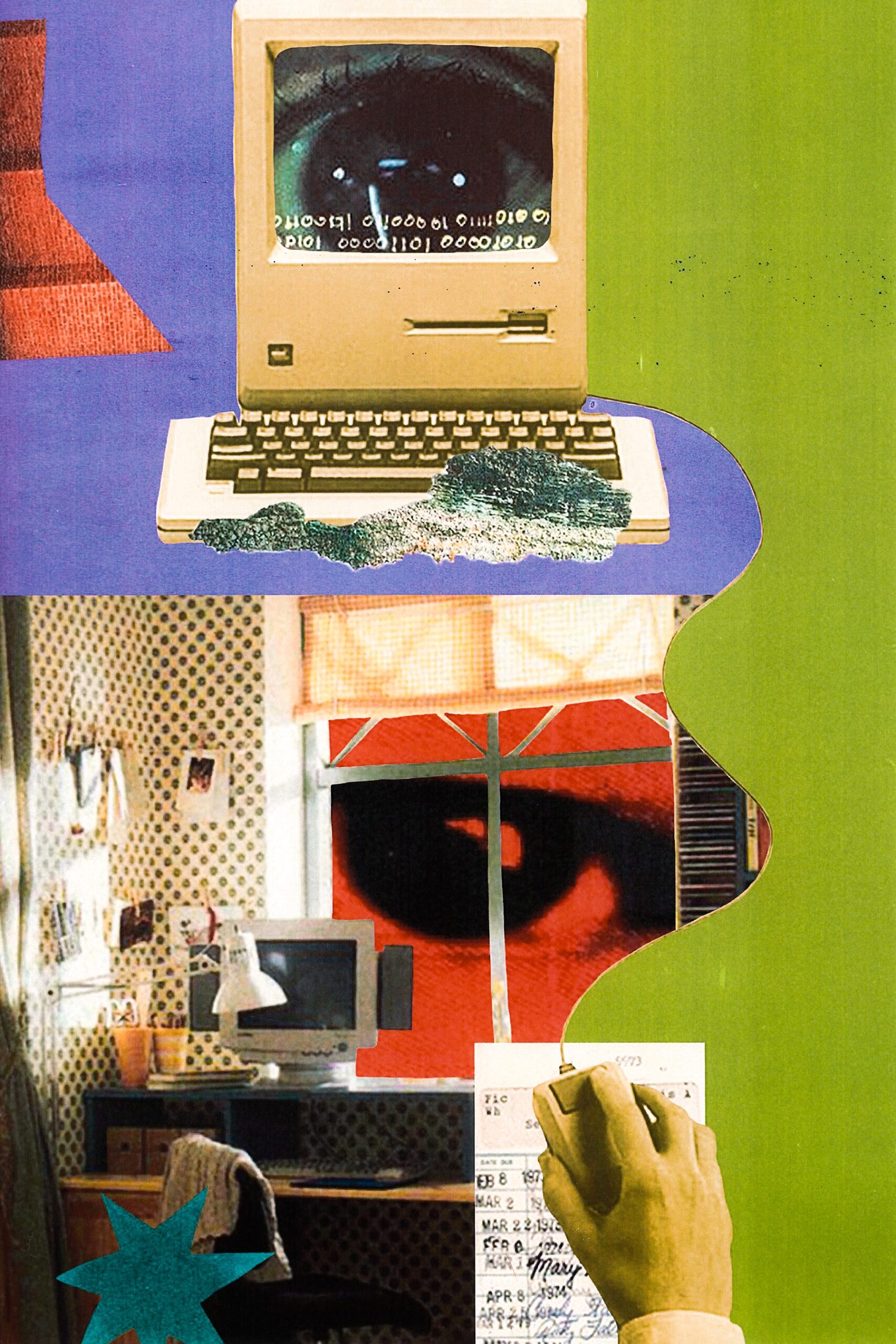They’re typing in a bedroom illuminated in purple. Or an august library with gold trimmed ceilings. Or in a lab bumbling with white-coat students. Their position, slightly askew, reveals a furrowed brow, a university sweater, a dyed frock of hair. They are, we suppose, a devoted college student intently grinding away. “Study With Me” reads text above them in TikTok’s blocky font: “We’re studying for 50 minutes, then taking a 10 minute break to chat.”
I encountered such visions on TikTok Live during the middling dredges of the pandemic. When I found them, I would linger, if only momentarily, to watch the nothing happen. As far as I could tell, these typing individuals were in fact studying, or at least performing it convincingly. I had no real assurance that what they were typing about or reading was actually related to their education, but it seemed that the few hundred or so other viewers in virtual attendance found it convincing enough to join the action.
“I’m studying for algebra,” one comment would read.
“I’m preparing to take my LSATs,” would go another.
There was something almost eerie about these Lives, which took on the loose title of “Study With Me” spaces and found momentary popularity during the more locked down moments of the pandemic, but have remained relevant for a dedicated community of students since. They had the vibe of the 24-hours-live stream “chill beats to study,” an ancient Youtube entity which displays a looping gif of an anime girl scribbling notes as lo-fi hip hop beats play quietly in the background. There’s almost always at least 20,000 people “watching” and studying with our cartoon friend. And in the chat window, people from around the world share stray thoughts about what they’re studying for. But whereas “chill beats to study to” folds viewers into a breathy global ambiance of both relaxation and productivity, “Study With Me” spaces sit students firmly across the table. Here we are together: Now read.
That togetherness, though, is long and empty. When encountering these Lives, I found myself waiting for the person studying to make a comment aloud or address a comment, and yet they never gave me anything. I never got to those “10 minutes to chat.” They typed. They read. They browsed. It all gave me a nervy feeling of watchfulness. It shared a cinematic language with mukbangs, the hallowed internet form where creators record themselves eating elbarote, often juicy meals. During them, a microphone is always positioned to ensure that every slurp and tingle hits the back of the viewer’s neck. There is an aural and auditory pleasure to watching the glistened food imbibed so readily, and yet, we aren’t really supposed to see this, are we? Eating, studying, sleeping: I know the lines between private life and public performance have blurred in recent years, but some acts I thought were decidedly not the stuff of public spectacle.
Strange as it all seemed to me, “Study With Me” spaces have become enough of a thing as to produce “Study With Me” creators: a loose network of TikTok influencers who have formed a community and business curating “Study With Me” spaces on TikTok Live.
Kaotharat Balogun, an Irish medical student, studies on TikTok Live for either concerted or sprawling swaths of time, five days a week. She usually can be seen with a clock ticking down behind her as she intently takes notes. Her account, @medical_kat, has 500 thousand followers on TikTok.
TikTok and Instagram are filled with content-creators preaching various productivity hacks and motivating wake-up calls. Kaotharat offers the same, but with a more gentle, vibey approach. One popular TikTok she made reads, “If you join my study Live/We can study together/And if you don’t/You can join another time/Give studying a chance/Let procrastination and the fear you have of failing fall away/I have got my eye on you.” The text is an interpolation of the song “Yes To Heaven ” by Lana Del Rey, which is playing in chipmunk-ified form during the video. It comes in gently as Kaotharat sits at her desk and types. There’s a hazy pink lighting around her. Pull up a chair.

If anything, Kaotharat is a vibe-setter. Her non-judgmental words of affirmation and pink-lit TikTok Lives are there to provide some digital aura for young people who need some minorly altered state to study. To those that imbibe, joining a Live is like lighting a digital candle, but rather than romance, its studiousness that now wafts throughout the space.
And while her company may bring pleasant solace to students around the world, there is also a clear economic benefit to Kaotharat becoming chief “Study With Me” vibes curator. 500 thousand followers, after all, is quite the community. Brands would pay a pretty penny to pull up a chair alongside those students and recommend their product. Like Noty, a google chrome extension which students can use to transcribe online lectures. In one promotional TikTok, Kaotharat asked her followers, “What are you waiting for? Go download [Noty] now so you can start transcribing from day 1 next semester!” A quick life hack and product rec from our digital study buddy.
Kaotharat’s business model mirrors the typical influencer model, where the basic aim is to rack up followers in order to increase the price of one’s paid posts, but other “Study With Me” spaces creators have invented on the form.
Bree Rubel, another “Study With Me” host, has Amazon lists of recommended study session products, such as her favorite pens and notebooks (of which she presumably gets a cut off as an Amazon Affiliate). She even has a specialized DoorDash code for “$10 off your first three orders!” on her Linktree. These too share a spiritual language with the study grind: “No time to go out to eat. DoorDash it is!” “No time to shop for school supplies! Amazon!”
In fact, the more I explored the “Study With Me” ecosystem, the more I discovered the multitudes of ways that its hosts create economic value for themselves. Some, even include text in their Lives like, “Buy me a coffee at the link in my bio,” with the aforementioned link bringing users to a Ko-Fi page. There, users can send a few bucks to a creator, “tipping” them for their service. “Buy me a coffee” is a euphemism for “just 3 dollars,” but it also spiritually aligns with the perpetual need to grind. So much to do! If only we can stay up!
There is much chatter online about parasocial relationships — the uncanny sense that we intimately know the celebrities, influencers, and even peers that we follow simply because we see them on their feed. “Study With Me” hosts though are offering something beyond parasocial relations, but parasocial presence. They’re not necessarily your “head cannon” best friend. They are, rather, the stranger you see in public whose visible activity indicates that you are also part of a larger collective, burdened, too, by the rudimentary grind. They’re typing in the library. Taking notes in the coffee shop. And so are you.
In our time of ever-expanding digital infrastructure, of curated feeds, many of us may miss that distant, yet knowable stranger. I know I did during our era of lockdowns. Alone with nothing but my mind and screen, I found myself haunted by the impending, doomful sense that my daily tasks were my own unique burden. I had no proof, other than what I saw on my device, that others were toiling, typing, puttering around their own domestic landscape. In that context, isolation creeps up like a soft malaise.
I figured that with loosened pandemic restrictions globally, students would exit these digital, purple-lit rooms in favor of more traditional communal study spaces. And most surely have. But the continued low-key popularity of “Study With Me” spaces indicates that there are still many that prefer the company of digital colleagues to physical ones. We were, afterall, deprived of two years of crucial socialization, instead relegated to playing along to the strange rhythms of Zoom school. We were left with a social life that was completely digital.
I found myself beleaguered by such a life, but also quite used to it. Having grown up on the internet, I was familiar with living an almost completely online existence. The pandemic though just rendered this creeping habit into a validated necessity. And though a digitized life may often feel more comfortable for a digital native such as myself, too much of it can still can put one in an illusory state. Time bends when you’re living life on a screen. The days merge, then drift away.
If these Lives provide some sense of shared, in-time experience to a young person who largely experiences the world as a series of isolated videos and static posts, then they are providing some grounding for others. But it’s the sheer triviality of that offering that gives me pause. Study buddies. Collective presence. Company. In a healthier world, these would be the banal facets of life that community, with all of its IRL imperfection, would fulfill.
At least it should. Because when it can’t, the market, in its slick, welcoming way, will try and take its place. 5 dollars for my oat milk latte. 5 dollars too, for a friend to read beside. Good thing the tip is optional.

